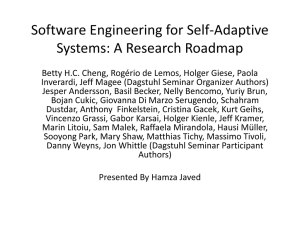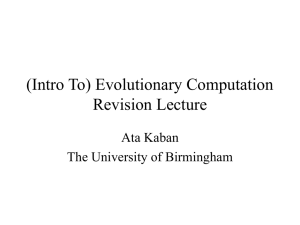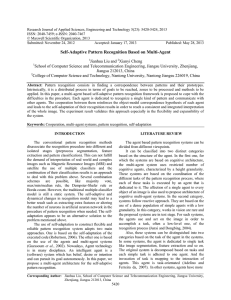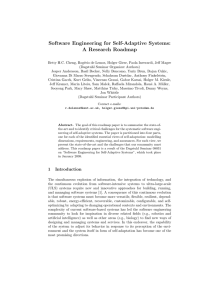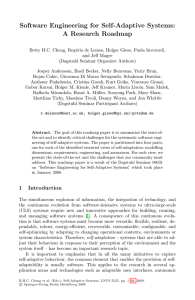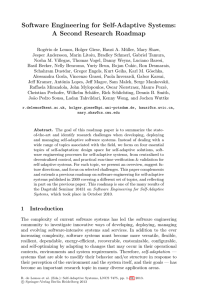Self-adaptation supporting multimedia interaction in large-scale real-time systems
advertisement
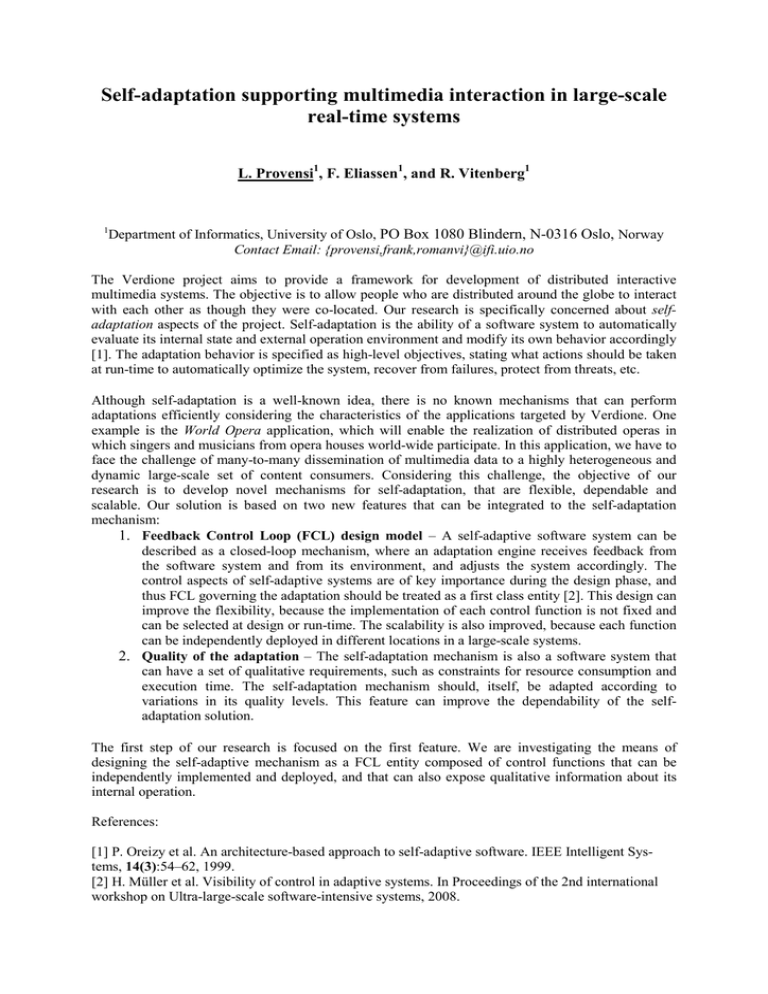
Self-adaptation supporting multimedia interaction in large-scale
real-time systems
L. Provensi1, F. Eliassen1, and R. Vitenberg1
1
Department of Informatics, University of Oslo, PO Box 1080 Blindern, N-0316 Oslo, Norway
Contact Email: {provensi,frank,romanvi}@ifi.uio.no
The Verdione project aims to provide a framework for development of distributed interactive
multimedia systems. The objective is to allow people who are distributed around the globe to interact
with each other as though they were co-located. Our research is specifically concerned about selfadaptation aspects of the project. Self-adaptation is the ability of a software system to automatically
evaluate its internal state and external operation environment and modify its own behavior accordingly
[1]. The adaptation behavior is specified as high-level objectives, stating what actions should be taken
at run-time to automatically optimize the system, recover from failures, protect from threats, etc.
Although self-adaptation is a well-known idea, there is no known mechanisms that can perform
adaptations efficiently considering the characteristics of the applications targeted by Verdione. One
example is the World Opera application, which will enable the realization of distributed operas in
which singers and musicians from opera houses world-wide participate. In this application, we have to
face the challenge of many-to-many dissemination of multimedia data to a highly heterogeneous and
dynamic large-scale set of content consumers. Considering this challenge, the objective of our
research is to develop novel mechanisms for self-adaptation, that are flexible, dependable and
scalable. Our solution is based on two new features that can be integrated to the self-adaptation
mechanism:
1. Feedback Control Loop (FCL) design model – A self-adaptive software system can be
described as a closed-loop mechanism, where an adaptation engine receives feedback from
the software system and from its environment, and adjusts the system accordingly. The
control aspects of self-adaptive systems are of key importance during the design phase, and
thus FCL governing the adaptation should be treated as a first class entity [2]. This design can
improve the flexibility, because the implementation of each control function is not fixed and
can be selected at design or run-time. The scalability is also improved, because each function
can be independently deployed in different locations in a large-scale systems.
2. Quality of the adaptation – The self-adaptation mechanism is also a software system that
can have a set of qualitative requirements, such as constraints for resource consumption and
execution time. The self-adaptation mechanism should, itself, be adapted according to
variations in its quality levels. This feature can improve the dependability of the selfadaptation solution.
The first step of our research is focused on the first feature. We are investigating the means of
designing the self-adaptive mechanism as a FCL entity composed of control functions that can be
independently implemented and deployed, and that can also expose qualitative information about its
internal operation.
References:
[1] P. Oreizy et al. An architecture-based approach to self-adaptive software. IEEE Intelligent Systems, 14(3):54–62, 1999.
[2] H. Müller et al. Visibility of control in adaptive systems. In Proceedings of the 2nd international
workshop on Ultra-large-scale software-intensive systems, 2008.
